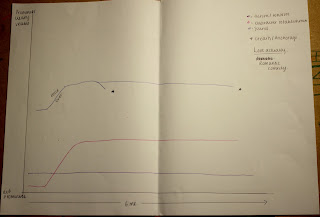From looking at a number of opening sequences, from different genres, I've been able to gather what is expected in a conventional opening sequence. All of the openings have prominent sounds throughout. Most establish a main character or setting which tends to become more obvious as the opening progresses. Narration or a voice over is common in the openings as it establishes the story, setting and character.
Here is a collection film opening analysis which helped to work out the codes and conventions of a typical opening sequence:
 The love actually sequence includes a voice over which establishes the character in question. However there isn't much action which I think is due to the films genre as
The love actually sequence includes a voice over which establishes the character in question. However there isn't much action which I think is due to the films genre as Trainspotting (comedy drama) and Halloween (horror) include a lot more action and tension.
The opening sequence to the first Twilight film establishes it's genre well by the use of colour, characters, music and font. From the sequence we can tell the film is going to be a fantasy drama, the dark colours pointing toward a more gothic narrative.
The Hot Fuzz opening sequence ( https://www.youtube.com/watch?v=3RAkY4R691E ) is also a very good example of genre establishment as it is obvious from the music that the film is going to be a comedy when paired with the action.


